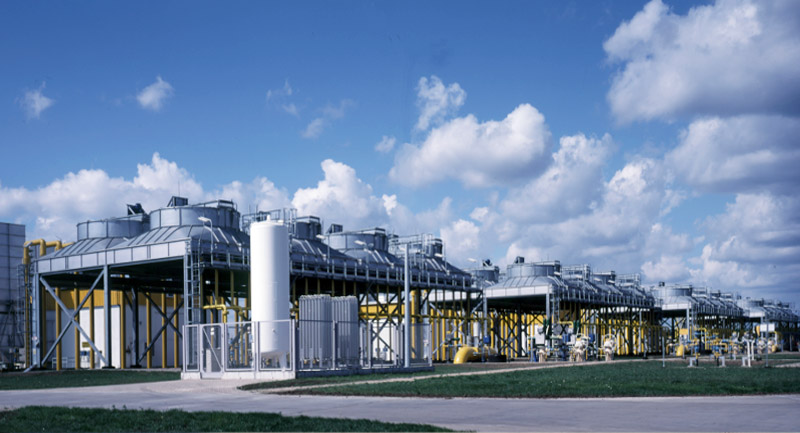materials of construction (MOC)
air-cooled heat exchangers (ACHEs) are selected based on factors like temperature, pressure, corrosion resistance, cost, and fluid compatibility. Here’s a breakdown of common materials used:
1. Tube Materials
Carbon Steel (CS)
- Grades: ASTM A179, A192, A210
- Pros: Low cost, good strength, easily weldable.
- Cons: Prone to corrosion (needs coatings for harsh environments).
- Use Case: Non-corrosive fluids (e.g., cooling water, hydrocarbons).
Stainless Steel (SS)
- Grades: 304, 316, 321, 347 (for high temp/corrosion resistance).
- Pros: Excellent corrosion resistance, handles high temps.
- Cons: Expensive, can suffer from chloride stress cracking.
- Use Case: Chemical processing, acidic/caustic fluids.
Aluminum
- Pros: Lightweight, excellent thermal conductivity, corrosion-resistant.
- Cons: Lower strength, not for high-pressure/temperature.
- Use Case: Low-temp applications (e.g., HVAC, compressed air).
Copper & Copper Alloys (Admiralty Brass, Cu-Ni)
- Pros: Superior heat transfer, microbial resistance.
- Cons: Expensive, soft (erosion risk).
• Use Case: Power plants, marine environments.
Duplex & Super Duplex Stainless Steel
• Grades: 2205, 2507
• Pros: High strength, excellent chloride resistance.
• Cons: Very costly.
• Use Case: Offshore oil/gas, seawater cooling.
Titanium
• Pros: Extreme corrosion resistance (seawater, acids).
• Cons: Very expensive, difficult to fabricate.
• Use Case: Chemical, desalination, high-purity processes.
2. Fin Materials
Fins are typically aluminum (for high thermal conductivity) or carbon steel (for durability).
• Bonded Fins: Aluminum fins on carbon steel tubes (galvanically protected).
• Extruded Fins: Integral to tubes (used in corrosive environments).
3. Header & Frame Materials
• Headers (Fluid Distribution Boxes): Carbon steel (lined with epoxy for corrosion protection) or stainless steel.
• Support Structure: Carbon steel (painted or galvanized) or stainless steel for corrosive environments.
4. Fan & Mechanical Parts
• Fan Blades: Aluminum, fiberglass-reinforced plastic (FRP), or coated steel.
• Motor Housing: Cast iron or aluminum.
•
Material Selection Guide
Application Recommended Material Reason
Oil/Gas (Hydrocarbons) Carbon steel tubes + Al fins Cost-effective, moderate corrosion
Chemical Processing SS 316/321 tubes Acid/alkali resistance
Power Plant Condensers Titanium or Cu-Ni tubes Seawater/steam resistance
HVAC Systems Aluminum tubes + fins Lightweight, high conductivity
Offshore/Coastal Duplex SS or titanium Chloride resistance
Key Considerations
- Corrosion: Galvanic compatibility between tubes/fins is critical (e.g., avoid aluminum fins with copper tubes).
- Temperature: Carbon steel is limited to ~400°C; stainless steel handles up to ~800°C.
- Cost: Titanium/Duplex SS are 5–10x more expensive than carbon steel.
Maintenance: Coatings (epoxy, galvanization) extend lifespan in harsh environments
